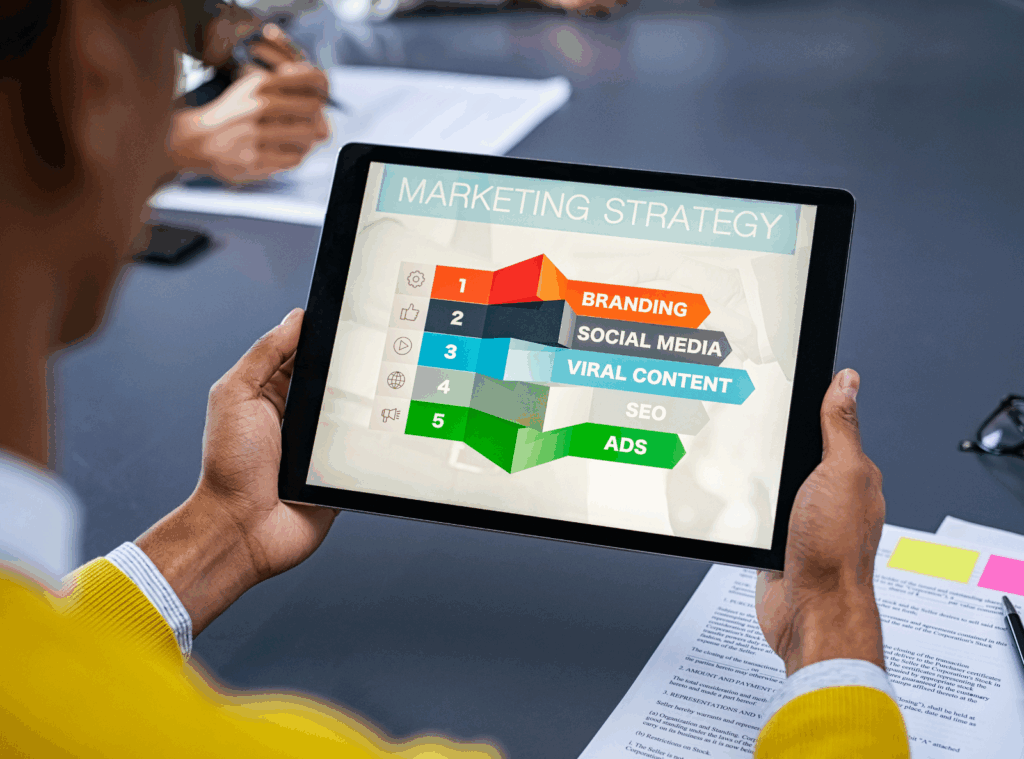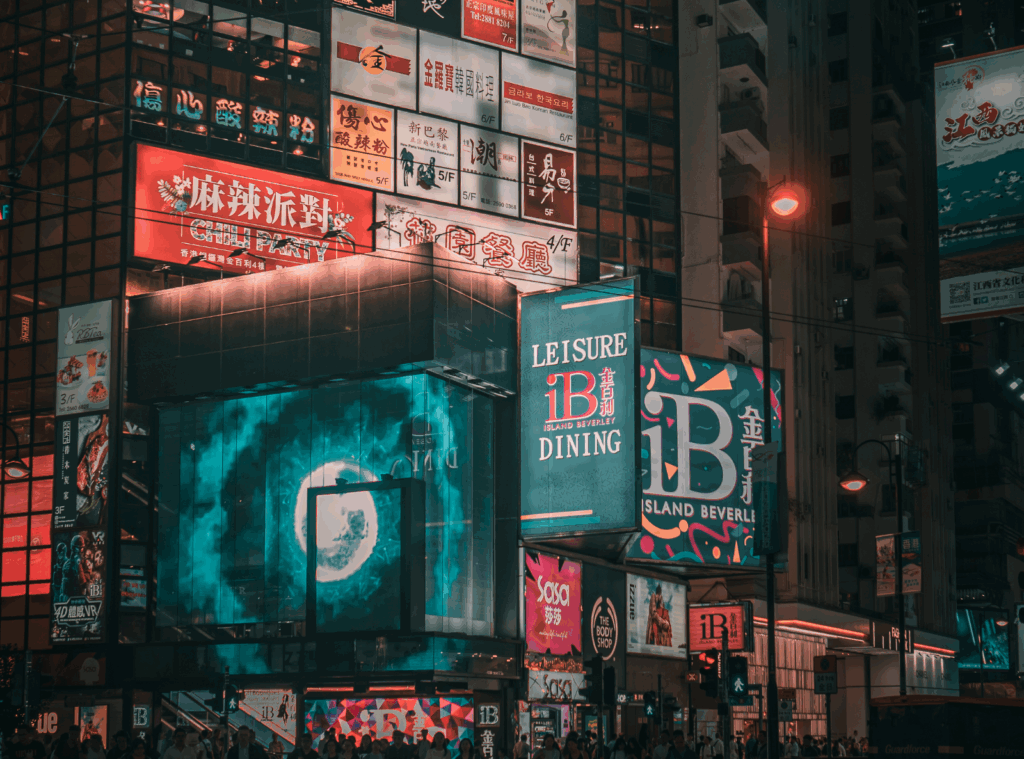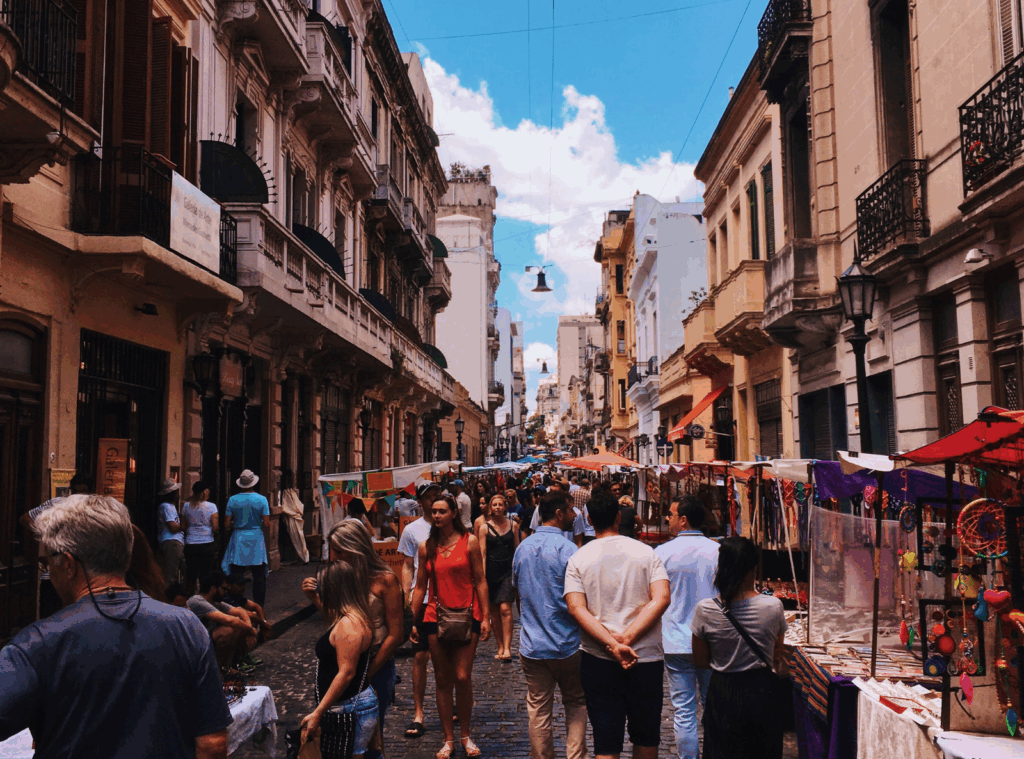Tourism marketing in 2025 means staring at more options than any budget can cover.
SEO. Google Ads. TikTok. And now the newer AI-driven tactics… AEO, GEO, and whatever-new-O pops up next month. The real challenge goes far beyond knowing which one actually earns results for your travelers, your budget, and your story.
This is where strategy matters most and exactly where we come in.

How Von Mack Agency Builds the Channel Mix
When clients ask where their dollars should go, here’s what we evaluate to create a smart tourism marketing budget strategy:
- Timeline & Budget:
- Short-term spikes vs. long-term compounding results. A limited budget might favor hyper-targeted ads, while larger budgets can build evergreen SEO foundations.
- Current Brand Recognition:
- Are we starting from scratch, or building on momentum? This determines whether we emphasize a foundation (like SEO + AEO) or ramp-up channels (like Google Ads or TikTok). See how we build brand positioning in tourism marketing.
- Are we starting from scratch, or building on momentum? This determines whether we emphasize a foundation (like SEO + AEO) or ramp-up channels (like Google Ads or TikTok). See how we build brand positioning in tourism marketing.
- Audience Behavior:
- Is the audience searching on Google? Typing “best beaches near Orlando” into TikTok? Or asking ChatGPT for hidden gems? Learn how to actually get recommended by AI.
- Is the audience searching on Google? Typing “best beaches near Orlando” into TikTok? Or asking ChatGPT for hidden gems? Learn how to actually get recommended by AI.
- Historical ROAS vs. Target ROAS:
- Cost per click only matters if it leads to bookings. We measure both with Return On Ad Spend (ROAS). Check out Google Ads management for tourism brands.
- Cost per click only matters if it leads to bookings. We measure both with Return On Ad Spend (ROAS). Check out Google Ads management for tourism brands.
- Content Fit:
- Video + UGC fuels TikTok & Meta Ads. Evergreen, structured guides fuel SEO and AEO. Do we need to create assets, or do we already have them? Our tourism content marketing services help with this.
- Video + UGC fuels TikTok & Meta Ads. Evergreen, structured guides fuel SEO and AEO. Do we need to create assets, or do we already have them? Our tourism content marketing services help with this.
- AEO Readiness:
- Is the brand cited in AI summaries yet? If not, we create structured FAQ clusters and schema markup. How to get AI to work for your tourism brand.
- Is the brand cited in AI summaries yet? If not, we create structured FAQ clusters and schema markup. How to get AI to work for your tourism brand.
-
Performance Testing:
-
Controlled, multi-channel tests in 2–3 weeks tell us what’s converting. We scale the winners, cut the losers, and always leave space to experiment. Data drives these choices, not hunches. But for true audience connection, travel marketing needs to convey a whole lot of heart.
-
After a general assessment and insight gathering with our client, we generally get straight into the master plan!
During this part, our sights are set primarily on getting sales “through the door” – but more importantly, doing it in a way that can create a powerful, lasting foundational build that will give our clients something to use, future-forward.

Creating a Compounding Build: Our Optimization Formula
Every collaboration is guided by principles that compound results:
- Tight brand power and storytelling.
- Entity signals (listings, reviews, press mentions) for credibility.
- Industry collaborations that build awareness + backlinks.
- Question-cluster builds to mirror real traveler queries.
- Website tracking + schema to feed SEO and AEO.
- Guerrilla marketing tactics for engagement spikes.
Our plans generally include a variety of items, as we believe in a “wholistic” approach to tourism marketing. In other words: we don’t silo channels. We engineer tourism marketing ecosystems.
In our experience, one-off’s tend to drain budgets, as they leave lots of room for agencies to “work in the dark,” not being able to take into account the many other things that tourism companies have in the mix that might be useful. Generally speaking, we like to cover our bases with digital, though this often goes above and beyond over time, with increasing results.

Google Ads Campaigns: Still the Booking Catalyst
Despite endless predictions of ad decline, the data says otherwise: 85% of destination marketing budgets increased or maintained ad spend in 2025.
Why? Ads move the needle fast. A killer visual + smart targeting = bookings now.
For tourism, nothing moves the needle faster than a strong visual paired with super witty targeting.
However, to be clear: #TeamVonMack is certainly seeing keyword bids increasing and the space getting much more competitive. We recommend entering only in partnership with a seasoned professional.
Our Google Ads Approach:
We benchmark cost-per-click against cost-per-booking and reallocate live campaigns to the top performers.
Every ad dollar is tracked against traveler conversions. If ROI dips, we move.
- Geo-targeting + psychographics to avoid wasted spend.
- Retargeting audiences = repeat visibility.
- Relentless A/B testing on creative, copy, and targeting.
- Benchmark CPC vs. cost-per-booking and reallocate dynamically.
TikTok & Social Media Campaigns: Where Inspiration Meets Search
As no surprise to literally anyone, social media has become a core travel search platform, especially for Gen Z and younger Millennials.
Gen Z and Millennials aren’t just scrolling… they’re using social media as a travel search engine. TikTok SEO now matters as much as Google SEO.
Users are passive audiences for the most part in venues like TikTok, BUT that’s shifting into more active by the day. Users can type “best beaches near Orlando” directly into TikTok search, and the results drive real trip decisions. EmbedSocial explores this phenomenon.
On the advertising side, costs remain impressively efficient in some places and terribly generic in others. Depending on your audience, we recommend not overlooking Meta, as it can produce some phenomenal ROAS if done well. TikTok, on the other hand, should be seen as brand recognition in terms of spend UNLESS paired with something super driven – like an influencer-backed, targeted promo giveaway.
Our Social Media Campaigns Approach:
- Produce really really good, original organic content first (keywords in captions, spoken in dialogue, and embedded in on-screen text). Remember to structure for search in Google now, too, with Insta posts.
- Pop best performers into small-scale ad spend tests, quickly scaling winners.
- Repurpose top-performing content across web and SEO channels for multi-platform impact. See our guide to influencer-driven tourism campaigns.

SEO, AEO, and Yo-Ho-Ho: Expanding the Search Game
Tourism SEO isn’t dead. It’s evolving.
If you forget it completely, you’re instantly throwing yourself behind the game.
Keywords, backlinks, and meta tags still earn rankings. But today travelers are skipping past traditional search and asking their questions directly to AI systems like ChatGPT, Google’s AI overviews, Perplexity, and so on.
That’s where Answer Engine Optimization for tourism (AEO) enters the picture. With AEO, the goal is to have your answer cited directly in an AI-generated response. Business Insider laid out how this shift is playing out.
Meanwhile, Generative Engine Optimization (GEO) is about structuring your content so AI models can fold it into useful answers for users in chat or voice queries.
Why This Matters: AI often defaults to scraping information from Wikipedia, Reddit, and other high-authority platforms. Without structured, credible content, your brand won’t even be considered.
Our AEO Approach:
- Publish FAQ clusters travelers actually ask.
- Develop long-form guides for topical authority.
- Strengthen schema, entity mentions, and third-party citations to boost your AI trust score.
- Build reporting systems to track AI citations. (And understand that it is an evolving space.)
The short version? AI-driven search rewards whoever is the most organized, trusted, and clear.
Tourism brands are starting to use generative AI to create personalized travel recommendations, dynamic ad copy, and even chatbot experiences that answer trip planning questions in real time. At Von Mack, we focus on Generative Engine Optimization (GEO) — making sure your content is structured so AI tools like ChatGPT and Google’s AI Overviews actually cite your brand.
ROI varies by market and spend, but across the tourism industry, Google Ads remain the fastest booking catalyst. Average returns can range from 3x to 5x on ad spend, with the best campaigns driving even higher. The key is in targeting — we benchmark cost-per-click vs. cost-per-booking and shift budgets toward the channels delivering the highest return.
It depends on the audience. TikTok dominates Gen Z and younger Millennials, where short-form video drives discovery. Meta (Facebook/Instagram) remains strong for broad reach and retargeting, especially for families and older demographics. The smartest approach is a hybrid: create engaging TikTok-style content, then repurpose and retarget it on Meta for maximum coverage.
Traditional SEO gets your site ranked in Google search results. AEO is about getting your brand’s answers cited directly in AI-generated responses. Instead of optimizing for clicks, you’re optimizing for visibility inside the answer — meaning your brand name appears in the very response travelers read. It’s the future of search, and it requires structured, FAQ-style, entity-rich conteny.

Bottom Line
The smartest brands don’t lock into one channel. They let performance guide the mix, doubling down on what converts and stepping back where spend isn’t justified. That’s how we do it.
What makes the difference isn’t luck, or trend-chasing, or copying what other travel brands are doing. It’s reading the signals, aligning budgets with real traveler behavior, and setting up systems that deliver now and create a foundation for growth later.
And that’s exactly how we work at Von Mack. Our team takes the pressure out of guessing and applies a plan that is equal parts performance-driven and traveler-focused. If your brand is ready to make the most of its marketing dollars and build a strategy that compels people to book, explore, and come back again, let’s talk.
FAQs: Tourism Marketing Channels in 2025
It depends on your goals. SEO builds long-term authority and AI visibility, while TikTok drives fast, inspirational reach. The best results come from combining both.
AEO helps your brand get cited in AI-generated answers on platforms like ChatGPT, Google AI Overviews, and Perplexity. Without AEO, your brand risks invisibility in the fastest-growing search trend.
We benchmark cost-per-click vs. cost-per-booking. ROI is measured by real traveler conversions, not vanity metrics.
Start with a performance audit. Typically: SEO/AEO for foundation, Ads for immediate bookings, and TikTok/social for brand discovery and content amplification.
Yes. Top-performing TikToks can be repurposed on your blog and embedded with keyword-rich captions, boosting both engagement and search visibility.